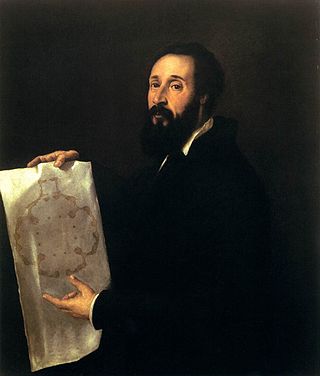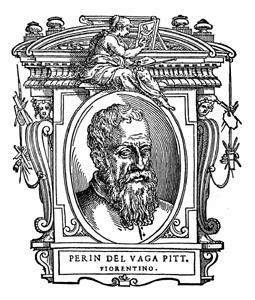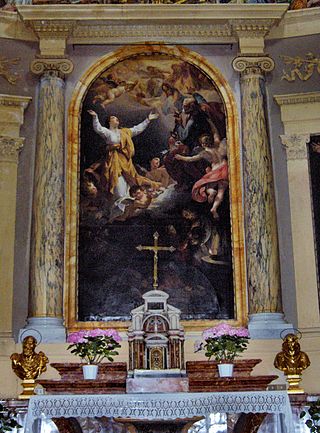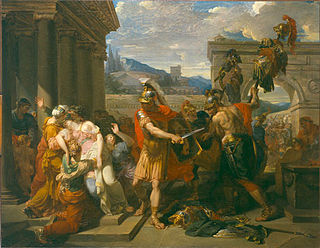

Stefano Tofanelli (September 26, 1752 - November 30, 1812) was an Italian painter during the Neoclassic period.


Stefano Tofanelli (September 26, 1752 - November 30, 1812) was an Italian painter during the Neoclassic period.
He was born in Nave, near Lucca, and as a young boy of ten he was apprenticed with the painter Giuseppe Antonio Luchi, also called il Diecimino, who was a follower of the rococo style of Giovanni Battista Tiepolo. With his fellow apprentice Bernardino Nocchi, then moved to Rome in 1768, where they both worked with Niccolò Lapiccola. In Rome with Nocchi he painted frescoes for the Palazzo of the Cardinal Dropanni. [1]
He was employed by engravers to make drawings for them, and, for example, for Volpato, he drew Parnassus by Raphael and a Sibyl and two Prophets by Michelangelo, Martyrdom by Guido Reni, Aurora and Day & Night by Guercino, and a Landscape by Claude Lorraine. For the artist Morghen, he completed a drawing of Poussin's Dance of the Hours, of Raphael's Jurisprudence, Transfiguration, and Miracle of Bolsena; and of Murillo's Magdalene. He also worked for Bettelini, Fontana, and Giovanni Folo. Tofanelli also painted altarpieces, portraits, and mythological scenes. In 1781 he opened an Art School in Rome, but afterwards returned to Lucca, and in 1802 became Professor of Drawing in the University of San Frediano. Among his pupils was Michele Ridolfi. He died in Lucca, aged 60.

Guido Reni was an Italian painter of the Baroque period, although his works showed a classical manner, similar to Simon Vouet, Nicolas Poussin, and Philippe de Champaigne. He painted primarily religious works, but also mythological and allegorical subjects. Active in Rome, Naples, and his native Bologna, he became the dominant figure in the Bolognese School that emerged under the influence of the Carracci.

Giulio Pippi, known as Giulio Romano, was an Italian painter and architect. He was a pupil of Raphael, and his stylistic deviations from High Renaissance classicism help define the sixteenth-century style known as Mannerism. Giulio's drawings have long been treasured by collectors; contemporary prints of them engraved by Marcantonio Raimondi were a significant contribution to the spread of sixteenth-century Italian style throughout Europe.

Baldassare Tommaso Peruzzi was an Italian architect and painter, born in a small town near Siena and died in Rome. He worked for many years with Bramante, Raphael, and later Sangallo during the erection of the new St. Peter's. He returned to his native Siena after the Sack of Rome (1527) where he was employed as architect to the Republic. For the Sienese he built new fortifications for the city and designed a remarkable dam on the Bruna River near Giuncarico. He seems to have moved back to Rome permanently by 1535. He died there the following year and was buried in the Rotunda of the Pantheon, near Raphael.

Piero Bonaccorsi, known as Perinodel Vaga, was an Italian painter and draughtsman of the Late Renaissance/Mannerism.

Gregorio de Ferrari was an Italian Baroque painter of the Genoese School.

Orazio Borgianni was an Italian painter and etcher of the Mannerist and early-Baroque periods. He was the stepbrother of the sculptor and architect Giulio Lasso.

Vincenzo Tamagni was an Italian painter of the Renaissance. Born in San Gimignano, he became an apprentice first with il Sodoma at Monte Oliveto Maggiore, and then worked in the Vatican Loggie under Raphael in Rome (1512-1516). Drawings of the Raphael frescoes in Tamagni's hand exist. He mainly painted in the towns surrounding Siena. He painted altarpieces for San Girolamo and Sant'Agostino in San Gimignano. He is featured in Giorgio Vasari's Vite, who refers to him as Vincenzo da San Gimignano.

Lazzaro Baldi was an Italian painter and engraver of the Baroque period active mainly in Rome.

Giovanni Biliverti was an Italian painter of the late-Mannerism and early-Baroque period, active mainly in his adoptive city of Florence, as well as Rome.

Giovanni Maria Bottala (1613–1644) was an Italian painter active in the Baroque period.

Giovanni Folo (1764–1836) was an Italian engraver of the Neoclassic period, active in Italy.

Niccolò Lapiccola was an Italian painter. He was born in Crotone and took lessons at Rome from Francesco Mancini. He supplied the designs for the mosaics for one of the chapels of St. Peter's Basilica. One of his pupils is the engraver Stefano Tofanelli and Bernardino Nocchi. He later became an academician in 1766 and later honorary member of Accademia di San Luca. He died in Rome.

Michele Ridolfi was an Italian painter and art critic.
Raffaelle Giovannetti (1822–1911) was an Italian painter, known mainly for his Neoclassical depictions of historic and sacred subjects in large canvases.

Bernardino or Giovanni Bernardino Nocchi was an Italian painter, mainly of sacred and historic subjects.

Stefano Orlandi was an Italian painter, active mainly in Bologna in the architectural perspective painting. He is known for painting fanciful architectural canvases, known as Capricci.
Giuseppe Antonio Luchi, also known as il Diecimino, was an Italian painter.

Jean-Baptiste Frédéric Desmarais (1756–1813) was a French painter of the Neoclassical period, who after 1786 was active in Italy, rising to be a professor of the Academies of Fine Arts of Lucca and Massa Carrara.

Arnold van Westerhout or Arnoldo van Westerhout was a Flemish printmaker, painter, draughtsman, publisher and printer. He trained in Antwerp but mainly worked abroad, and in particular in Italy. He settled in Rome where he was a prominent printmaker and publisher. The artist is less known for his paintings, which covered religious and genre subjects, than for his work as a printmaker and publisher.
Francesco Buonamici (1596–1677) was an Italian Baroque architect, painter and engraver who was active in Lucca, Malta, Sicily and Rome during the 17th century. He played a significant role in the introduction of Baroque in Malta.